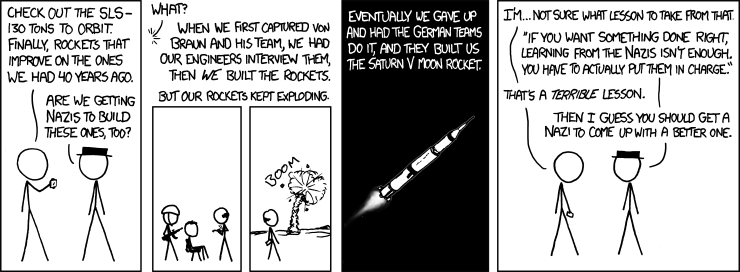alfadriver (Forum Supporter) said:
Keith Tanner said:
What's amazing about this launch today is that it included a new concept in relighting and initiating the flip. Which was suggested, planned and put into practice in a month. Yes, the touchdown was a little harder than ideal and/or something went wrong with the legs that led to LOV, but that's an incredible pace of progress.
???
That concept was part of SN8 and 9. During the righting phase in SN8, it blew up (IIRC one of the engines didn't re-light), and SN9, it was not quite vertical. Maybe I need to look back on those launches, but I very much remember it laying on it's side as it came to earth. And then the engines fired starting to make it vertical again for landing.
Actually, that's not quite right- at 6:34 into the launch of SN8, it went upright, but one motor was not powerful enough for it to stop the momentum- 1:54:47 of this video https://www.youtube.com/watch?v=ap-BkkrRg-o&ab_channel=SpaceX
And the same thing happened for SN9, almost at the same moment relative to the launch- 6:26- (11:53 of this https://www.youtube.com/watch?v=_zZ7fIkpBgs&ab_channel=SpaceX)
SN8 suffered from fuel starvation during the flip. That was solved with a different header tank pressurization scheme.
SN9 had an engine that failed to relight so it didn't have the power needed to perform the flip. At that time, the plan was to light two engines, flip, then shut down one engine and land on the other. But with only one lit, it couldn't rotate enough. Raptors being a new engine design, they're a little harder to light than some of the others out there.
For SN10, they changed the process. Now they're lighting three engines, just in case. Then one is shut down (if applicable), two are used for the flip, one is shut down and it lands on one. That's a new concept that brings some real changes in control logic and dynamics. Remember that rocket engines don't idle, the minimum thrust is fairly significant and the craft is at minimum weight so things are pretty sporty with three engines lit. Plus you don't know in advance which of the three engines will be the "safety engine" that gets shut down or which of the engines will be used for the final landing burn. That's quite a change to make, and it all takes place in a part of the flight where you cannot get it wrong. And it worked. Three lit, two flipped, one landed but the vehicle took some damage.
They also managed to improve the minimum throttling of the Raptor engine at the same time, I believe - you can actually see the difference in the two engines on the way up. In a MONTH.
I think where we disagree is the impact on the test plan from the loss of the vehicle. SpaceX has never reflown a Starship prototype even if it landed successfully. Past behavior would indicate that the actual flight is the last step in its planned lifespan. They've saved three after test flights - one has been turned into a mounting point for cameras and telemetry. The others were all eventually dismantled for scrap.


























